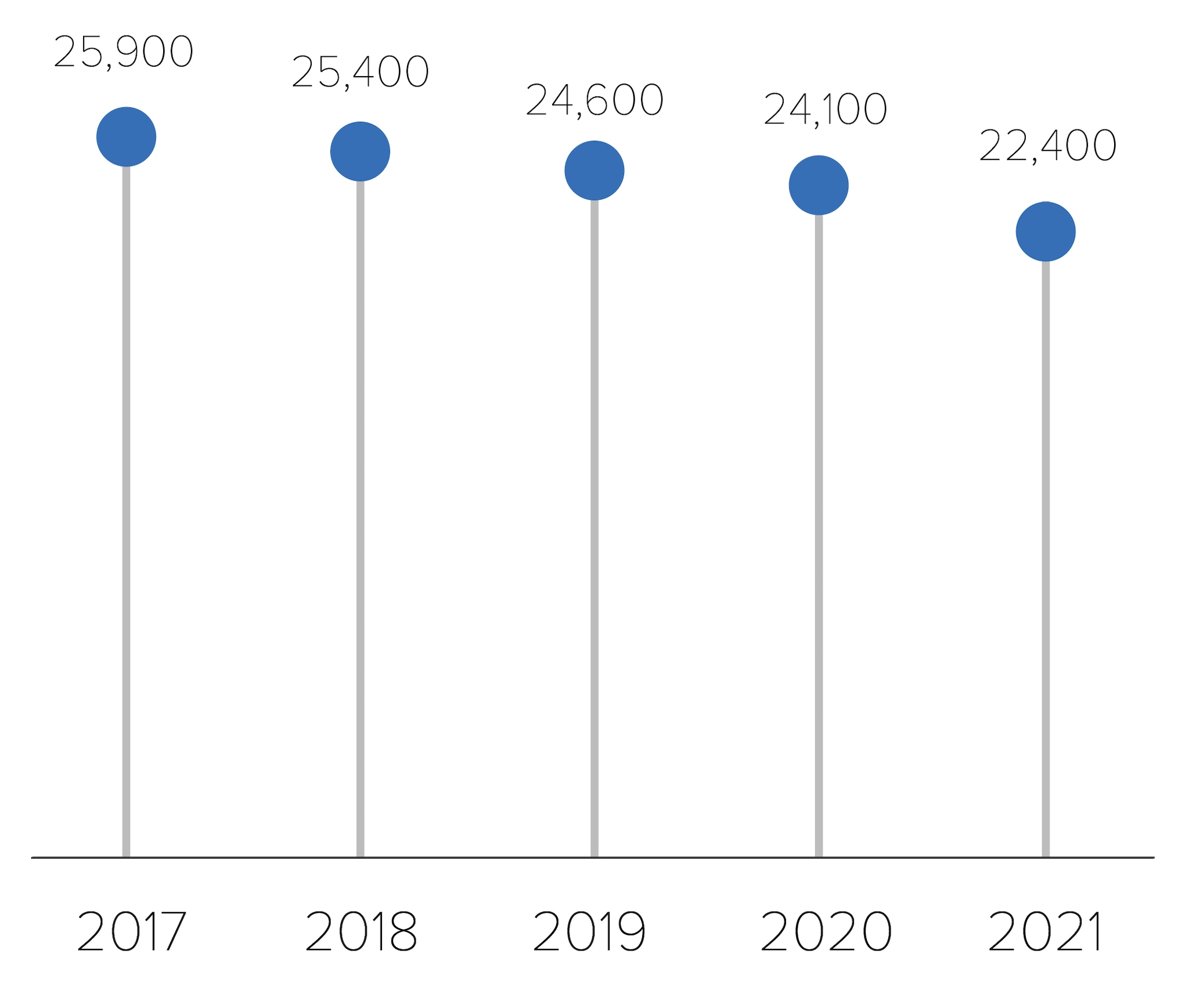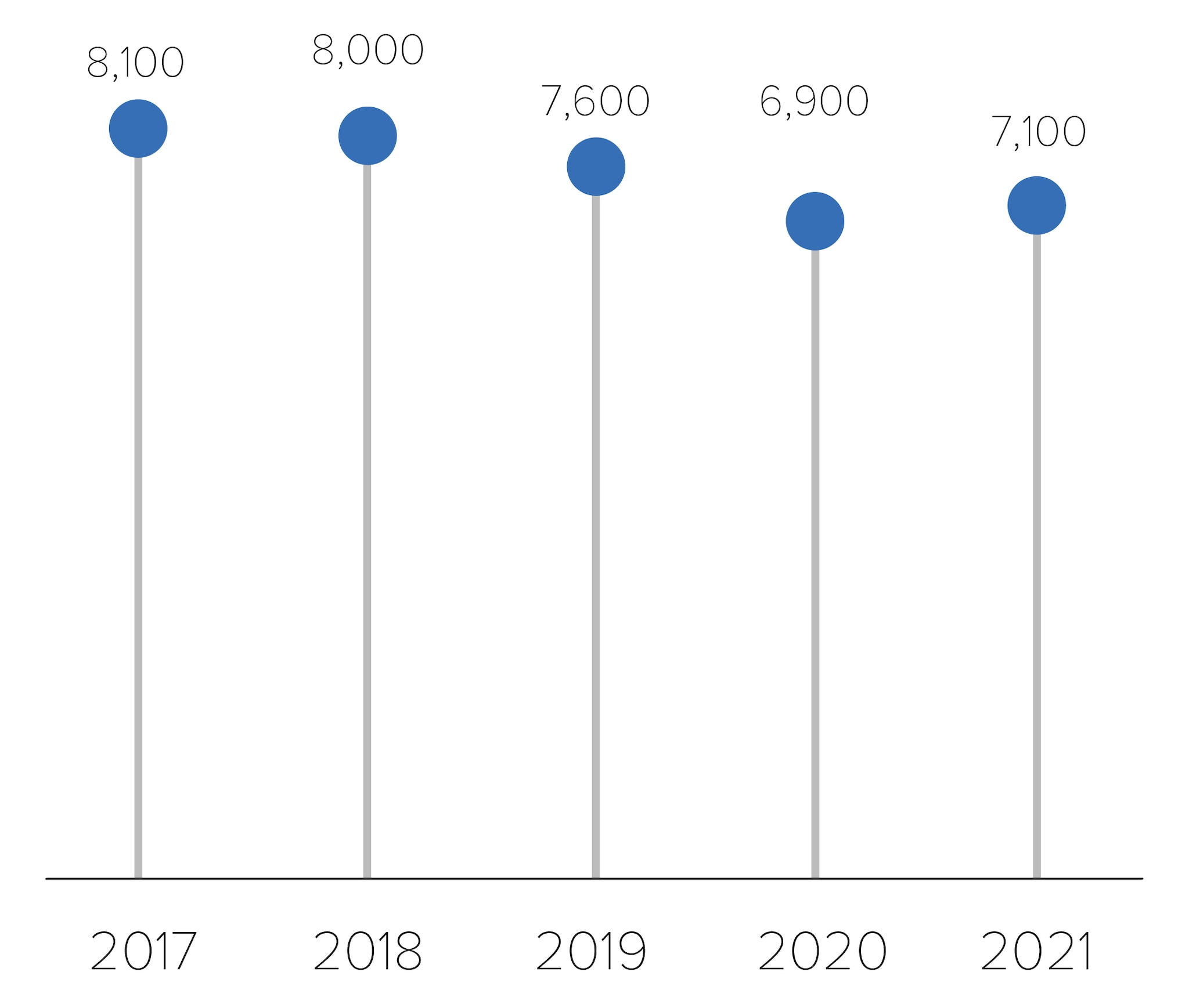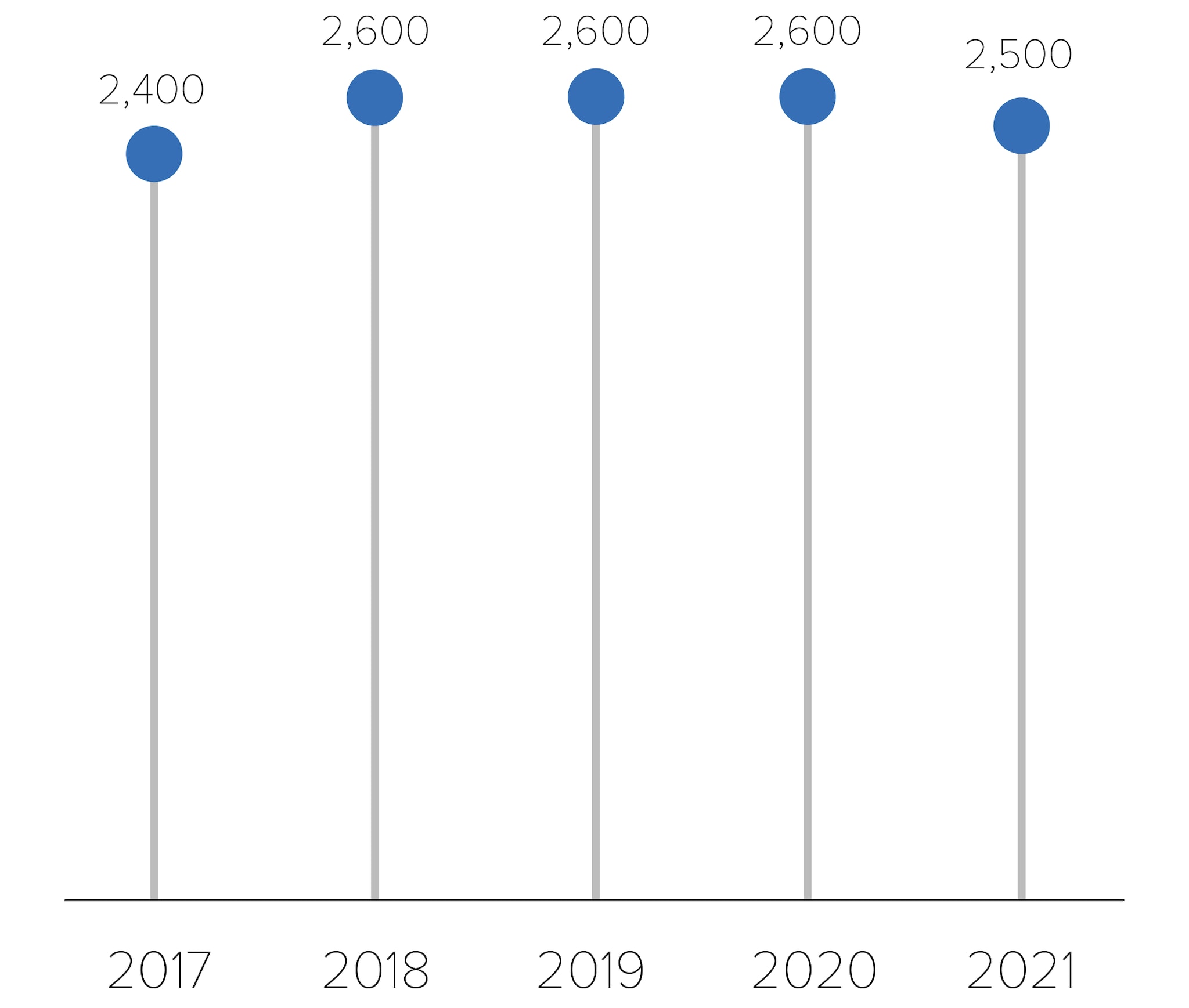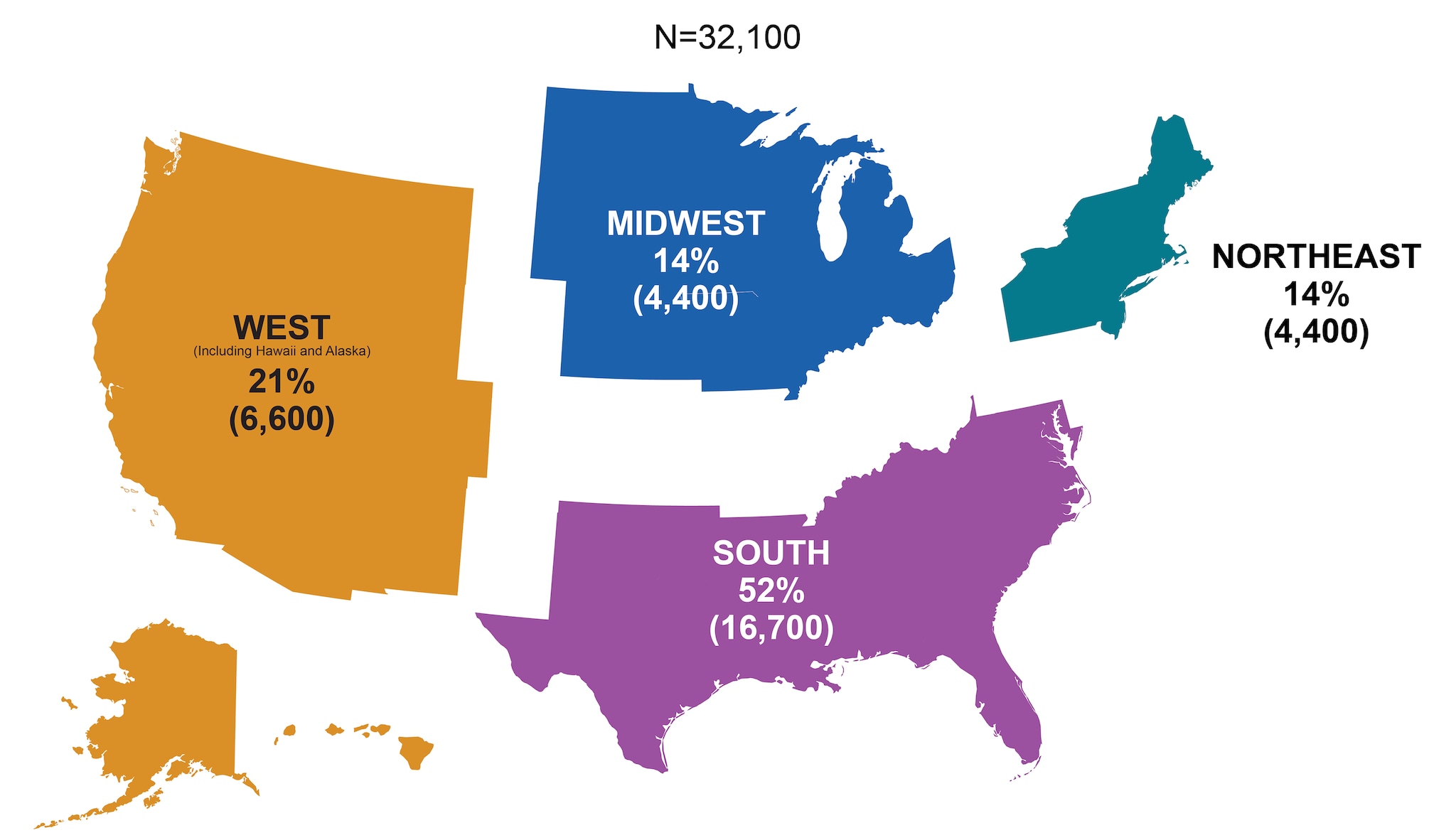HIV Incidence
HIV incidence is one of the six Ending the HIV Epidemic in the U.S. indicators. HIV incidence refers to the estimated number of new HIV infections each year.c Estimated HIV infections decreased 12% overall from 2017 to 2021.


HIV Infections Among Gay, Bisexual, and other Men Who Reported Male-to-Male Sexual Contactd
In 2021, gay, bisexual, and other men who reported male-to-male sexual contact accounted for 70% (22,400) of the 32,100 estimated new HIV infections and 86% of estimated infections among all men.

* Among people aged 13 and older.
Source: CDC. Estimated HIV incidence and prevalence in the United States, 2017–2021. HIV Surveillance Supplemental Report, 2023; 28(3).
HIV Infections Among People Who Reported Heterosexual Contact
In 2021, people reporting heterosexual contact accounted for 22% (7,100) of the 32,100 estimated new HIV infections.
- Men reporting heterosexual contact accounted for 6% (2,000) of estimated new HIV infections.
- Women reporting heterosexual contact accounted for 16% (5,100) of estimated new HIV infections.

* Among people aged 13 and older.
Source: CDC. Estimated HIV incidence and prevalence in the United States, 2017–2021. HIV Surveillance Supplemental Report, 2023; 28 (3).
HIV Infections Among People Who Inject Drugs (PWID)
In 2021, PWID accounted for 8% (2,500) of the 32,100 estimated new HIV infections.
- Men who inject drugs accounted for 4% (1,400) of estimated new HIV infections.
- Women who inject drugs accounted for 3% (1,100) of estimated new HIV infections.

* Among people aged 13 and older.
Source: CDC. Estimated HIV incidence and prevalence in the United States, 2017–2021. HIV Surveillance Supplemental Report, 2023; 28 (3).
HIV Infections by Region
In 2021, the South accounted for more than half (52%) of the 32,100 estimated new HIV infections.

* Among people aged 13 and older.
Source: CDC. Estimated HIV incidence and prevalence in the United States, 2017–2021. HIV Surveillance Supplemental Report, 2023; 28 (3).
a Unless otherwise noted, data in this web content are for adults and adolescents aged 13 and older.
b American Samoa, Guam, the Northern Mariana Islands, Puerto Rico, the Republic of Palau, and the US Virgin Islands.
c HIV incidence data are not available for transgender people.
d Includes infections attributed to male-to-male sexual contact and injection drug use (men who reported both risk factors).
e A person whose gender identity or expression is different from their assigned sex at birth.
f A person assigned male at birth who identifies as female.
g A person assigned female at birth who identifies as male.
h Includes infections attributed to male-to-male sexual contact and injection drug use (men who reported both risk factors).
i The term male-to-male sexual contact is used in CDC surveillance systems. It indicates a behavior that transmits HIV infection, not how individuals self-identify in terms of their sexuality. This web content uses the term gay and bisexual men to represent gay, bisexual, and other men who reported male-to-male sexual contact.
j Includes people who have ever had sexual contact with a person known to have, or with a risk factor for, HIV. Does not include men who have ever had sexual contact with both men and women.
k Does not include infections attributed to male-to-male sexual contact and injection drug use (men who reported both risk factors).
l Regions used in CDC’s National HIV Surveillance System:
Northeast: CT, ME, MA, NH, NJ, NY, PA, RI, VT
Midwest: IL, IN, IA, KS, MI, MN, MO, NE, ND, OH, SD, WI
South: AL, AR, DE, DC, FL, GA, KY, LA, MD, MS, NC, OK, SC, TN, TX, VA, WV
West: AK, AZ, CA, CO, HI, ID, MT, NV, NM, OR, UT, WA, WY
- CDC. Diagnoses of HIV infection in the United States and dependent areas, 2021. HIV Surveillance Report 2023;34.
- CDC. Estimated HIV incidence and prevalence in the United States 2017–2021. HIV Surveillance Supplemental Report 2023;28(3).
- CDC. Monitoring selected national HIV prevention and care objectives by using HIV surveillance data—United States and 6 dependent areas, 2021. HIV Surveillance Supplemental Report 2023;28(4).
- CDC. Quality of life and HIV stigma—Indicators for the National HIV/AIDS Strategy, 2022–2025, CDC Medical Monitoring Project, 2017–2020 cycles. HIV Surveillance Special Report2022;30.
- CDC. Behavioral and clinical characteristics of persons with diagnosed HIV infection—Medical Monitoring Project, United States 2020 cycle (June 2020–May 2021). HIV Surveillance Special Report 2022;29.
